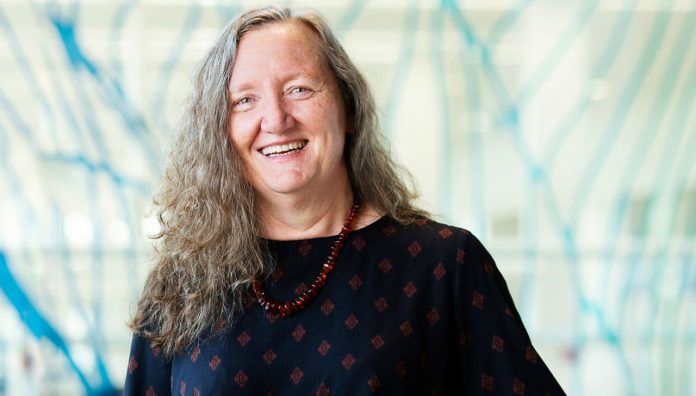Dr Libby Roughead MPS is Senior Principal Research Fellow at the University of South Australia’s School of Pharmacy, where her work focuses on quantifying the extent of problems with medicines use, and testing solutions. She was the lead author of PSA’s groundbreaking report, Medicine Safety: Take Care, released earlier this year.
How did you start in pharmacy?
I studied at the Victorian College of Pharmacy and went on to work as a hospital pharmacist for a couple of years at St Vincent’s Hospital in Melbourne. I then made the switch to community pharmacy for the next eight or so years before I went back to studying.
What made you focus your research on the quality use of medicines?
After working in community pharmacy I decided to undertake some further study to extend my practice thinking. I began a Graduate Diploma in Health Promotion at Latrobe University, and this is when I started to think about how I could combine my two degrees. As luck would have it, I was introduced to Latrobe staff who were working in pharmaceutical policy. It was that work that started me on the path from being a pharmacist who looked at what was going on in my practice, to that much broader public health perspective of what goes on in populations and the kind of policies and supportive frameworks we need to underpin that work.
It was a gradual move, but I certainly found my niche. It was almost like the jobs had been made for me once I moved across to work in policy.
Can you please tell us about your role in the publication of PSA’s Medicine Safety: Take Care report?
I’ve been involved in the medication safety reports since the first one, which was published in 2002. We’ve looked at the various data sources we can use to identify the problem, such as admissions to different hospitals at different times, and by putting them all together you can start to tell a story about the country.
The beauty of this work is that you can draw attention to the areas where we know there are problems, so we can focus on improving those medicines and health areas.
You’ve long been involved in the field of medicine safety. How have you seen things change?
Over the last 20 years that I’ve been involved in this work, I’ve seen the country move from treating populations with single medicines for single diseases to treating multimorbid populations, with multiple medicines for each disease. All of a sudden, the complexity of the issue has increased. The role and involvement of the pharmacist becomes more important because it’s much easier for things to go wrong with services under those circumstances.
What impact do you think the most recent report will have?
I’m hoping it acts as a prompt for opportunity. I think there’s going to be great opportunities for pharmacists to expand their practice. The evolution of My Health Record and the inclusion of pathology reports in the system means that pharmacists will be able to help patients receive better dosing, especially those with complex health needs such as renal function impairment.
What does the report say about the importance of allowing pharmacists to practise to their full scope?
The report highlights the absolute need for pharmacists to practise to their full scope. More than ever, medicines are both lifesaving and potentially problematic, so we need pharmacists to be constantly focused on the whole patient and medical record so they can optimise the medicines used for each patient as they come in. One thing we do know: vulnerable patients will see a pharmacist almost every week, so that gives pharmacists an amazing opportunity to really be at the forefront of identifying deterioration events and ensuring those people are as well cared for as they can be.



 John Jones MPS, pharmacist immuniser and owner of My Community Pharmacy Shortland in Newcastle, NSW[/caption]
John Jones MPS, pharmacist immuniser and owner of My Community Pharmacy Shortland in Newcastle, NSW[/caption]


 Debbie Rigby FPS explaining how to correctly use different inhaler devices[/caption]
Debbie Rigby FPS explaining how to correctly use different inhaler devices[/caption]




 Professor Sepehr Shakib[/caption]
Professor Sepehr Shakib[/caption]

 Lee McLennan MPS[/caption]
Lee McLennan MPS[/caption]
 Dr Natalie Soulsby FPS, Adv Prac Pharm[/caption]
Dr Natalie Soulsby FPS, Adv Prac Pharm[/caption]
 Joanne Gross MPS[/caption]
Joanne Gross MPS[/caption]








